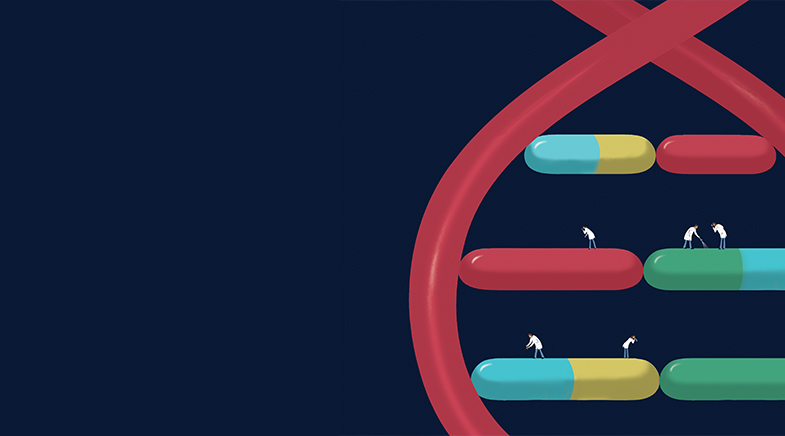Patching skin with bioink
-
- from Shaastra :: vol 04 issue 08 :: Sep 2025

A bioplastic-based scaffold with customised pore sizes can help in healing wounds.
Printed skin patches may soon aid in the healing of wounds, including those caused by burns. Researchers at the Karaikudi-based Central Electrochemical Research Institute, a constituent laboratory of the Council of Scientific & Industrial Research (CSIR-CECRI), are developing a bioplastic-based scaffold whose pore sizes can be customised as required.
A team led by V. Ravi Babu and Sravanthi Loganathan created artificial skin patches through 3D bioprinting a bioink composed of poly (lactic acid) containing cerium nitrate and silver nanoparticles. The scientists reported the work in the journal ACS Applied Bio Materials (bit.ly/Skin-CECRI).
Regular skin patches often do not have pores of the required size on their surface. Tissue engineering and regenerative medicine studies have shown that scaffolds with pore sizes of 250 microns (one micron is one millionth of a metre) or more are best suited for cell adhesion and proliferation. The technique developed by the CSIR-CECRI scientists enables the design of scaffolds with varying pore sizes tailored to specific requirements. Using a bioprinter, they can print the scaffolds with accurate pore sizes. While cerium nitrate present in the scaffolds promotes blood vessel formation and tissue regeneration, silver nanoparticles have known antibacterial properties.
"Our ultimate goal is to make it possible to print the patches directly on wounds using bioprinters while patients undergo treatment in hospitals," says Babu, the co-corresponding author of the study. So far, the team, along with their counterparts at the Sri Venkateswara Veterinary University in Tirupati, has tested the scaffold's wound-healing properties in rats.
The technique, developed by scientists at the Central Electrochemical Research Institute, enables the design of scaffolds with varying pore sizes tailored to specific requirements. These artificial scaffolds will likely be cost-effective.
The CSIR-CECRI scientists have developed another formulation that shows even better results, completely healing a wound in 14 days. They have, however, decided not to publish the work, but have instead filed for a patent and plan to commercialise it. Similar regenerative scaffolds reported so far require approximately 21 days for complete healing.
The scientists hope such artificial scaffolds will be cost-effective; the lab-made 10cm x 10cm patch costs around ₹500. Currently, the team is scouting for an industrial partner to take the project forward, and for clinical trials. Preliminary discussions are on with a Bengaluru-based pharmaceutical start-up.
Biman B. Mandal, Professor of Bioengineering at the Indian Institute of Technology Guwahati, however, points out that the work is "introductory" and needs to be "supported through additional experiments". Mandal, who specialises in cell-based tissue engineering, stresses the need for analysing the microscopic structures of the regenerated skin tissue to ascertain the success of skin tissue engineering.
See also:
Have a
story idea?
Tell us.
Do you have a recent research paper or an idea for a science/technology-themed article that you'd like to tell us about?
GET IN TOUCH














